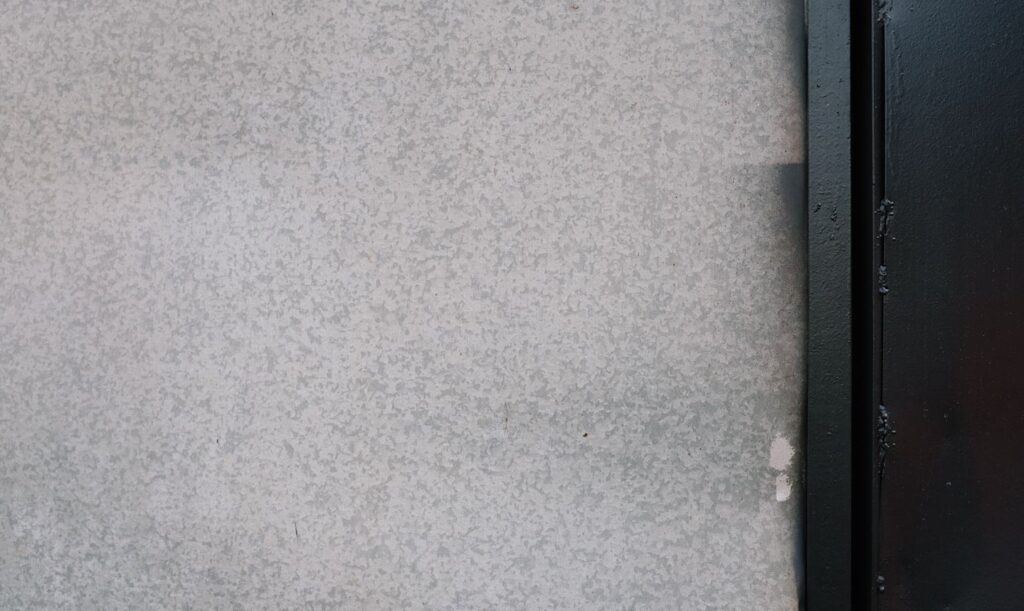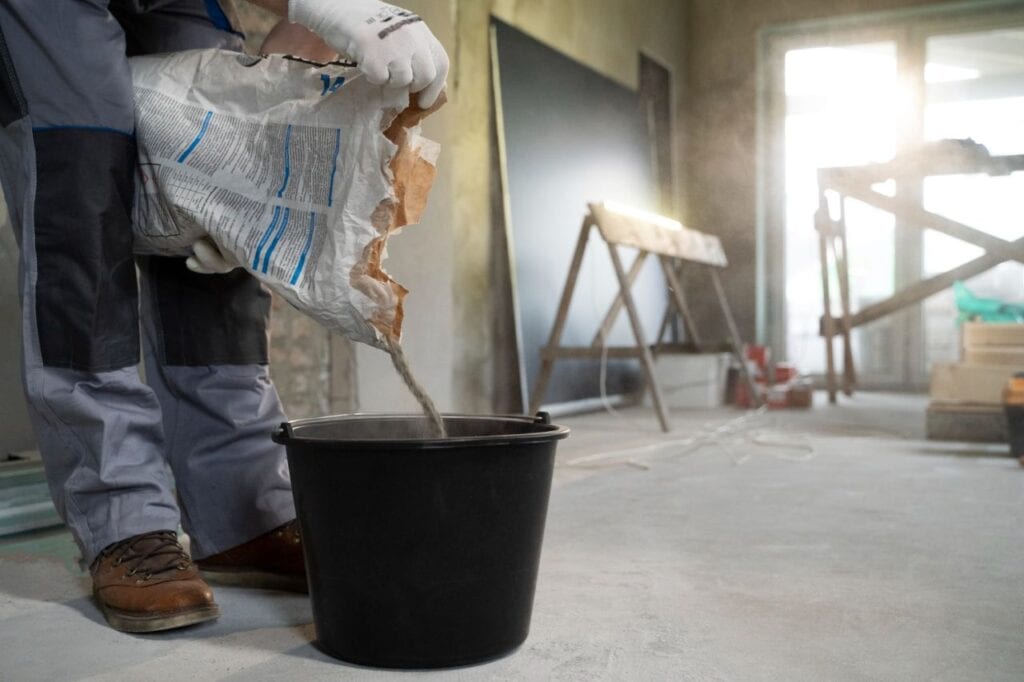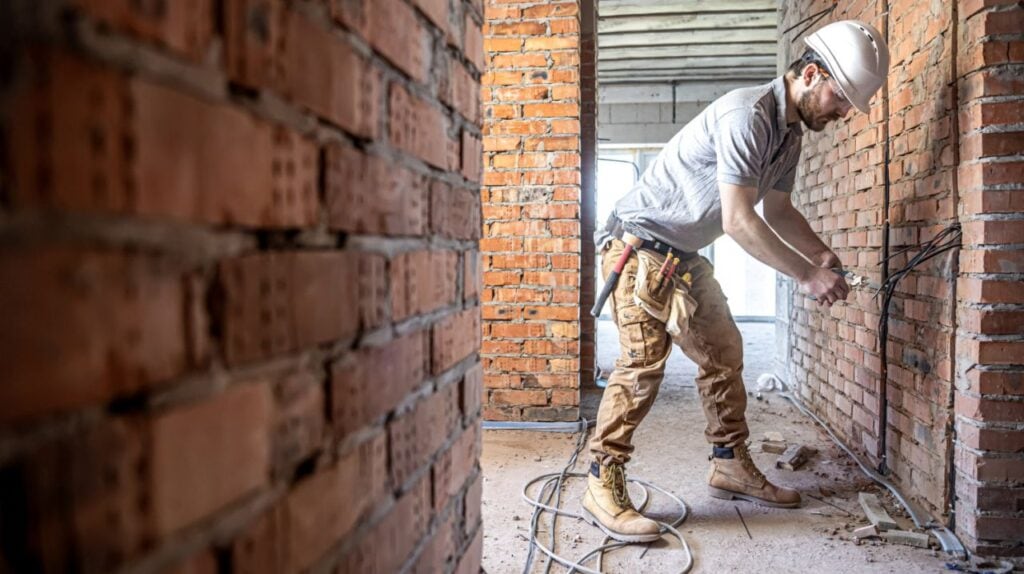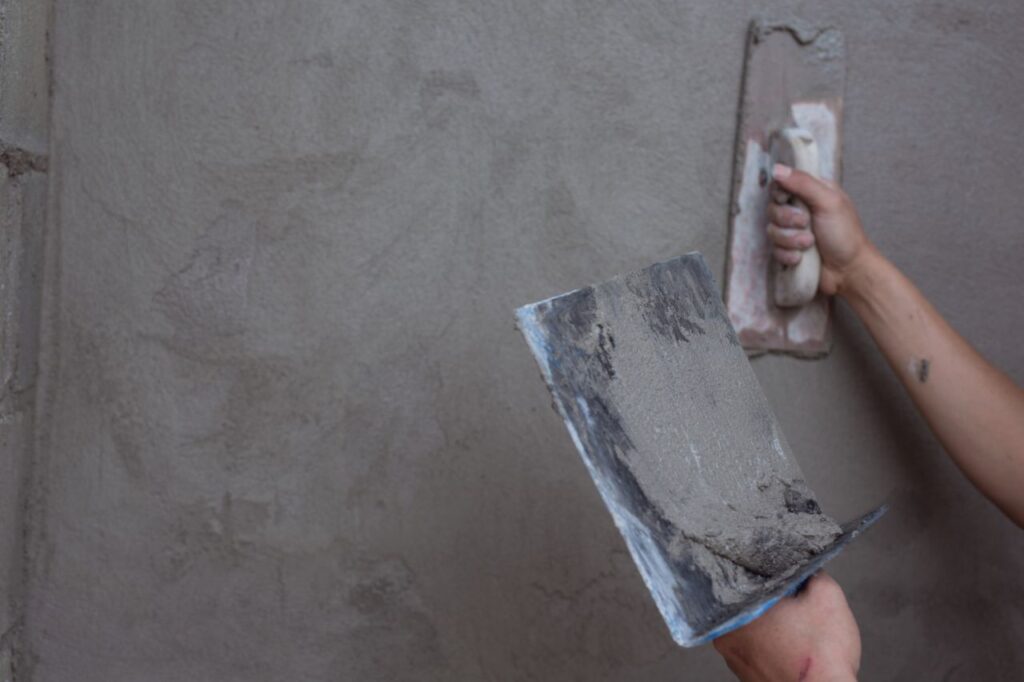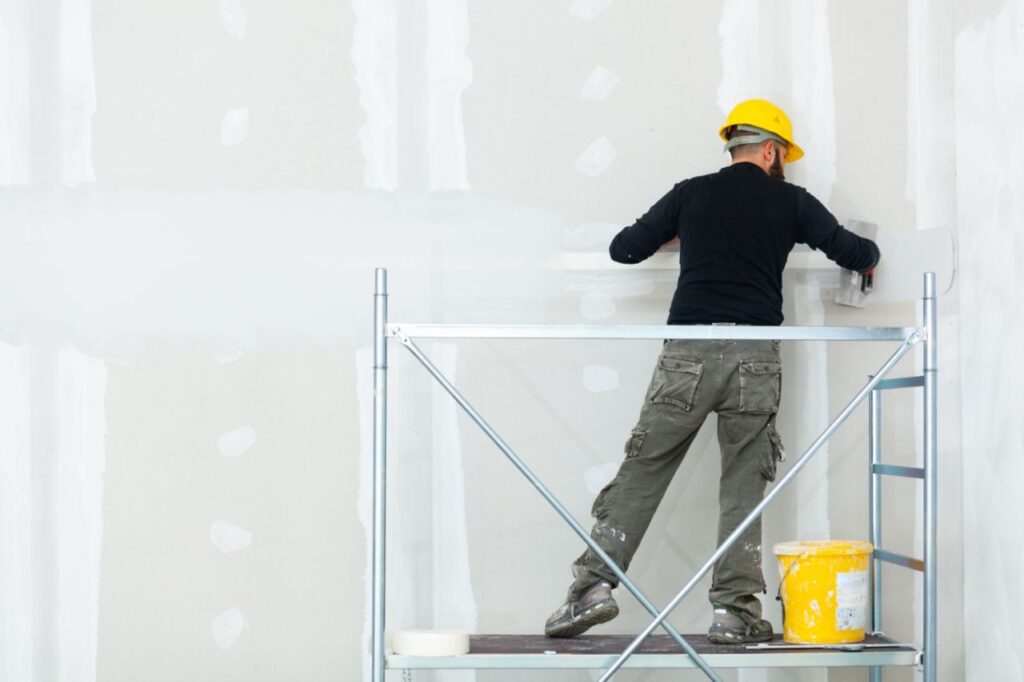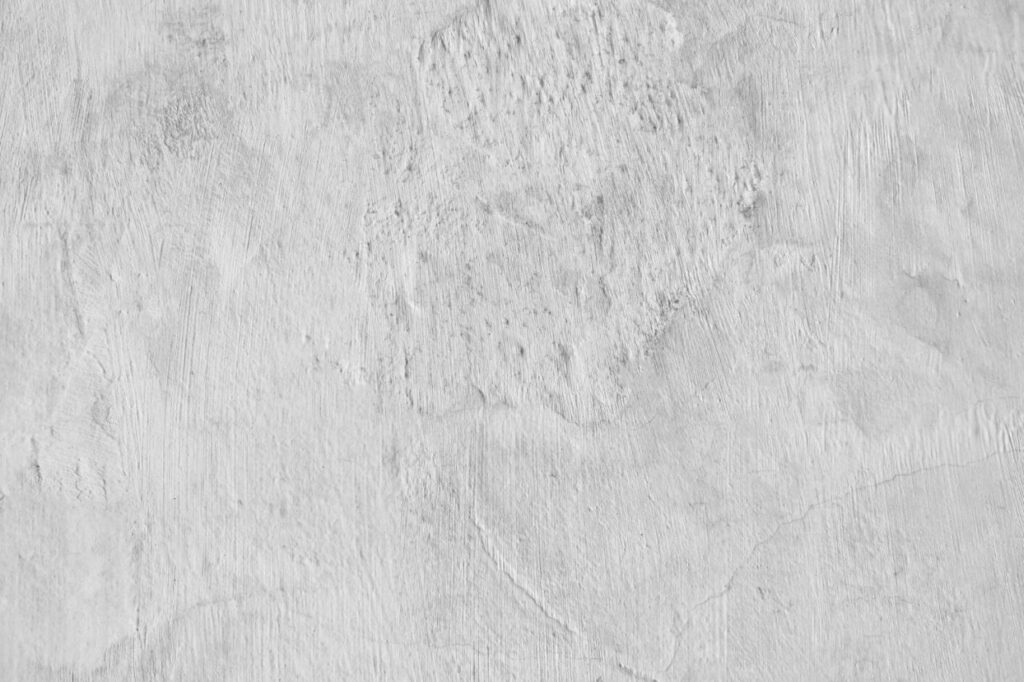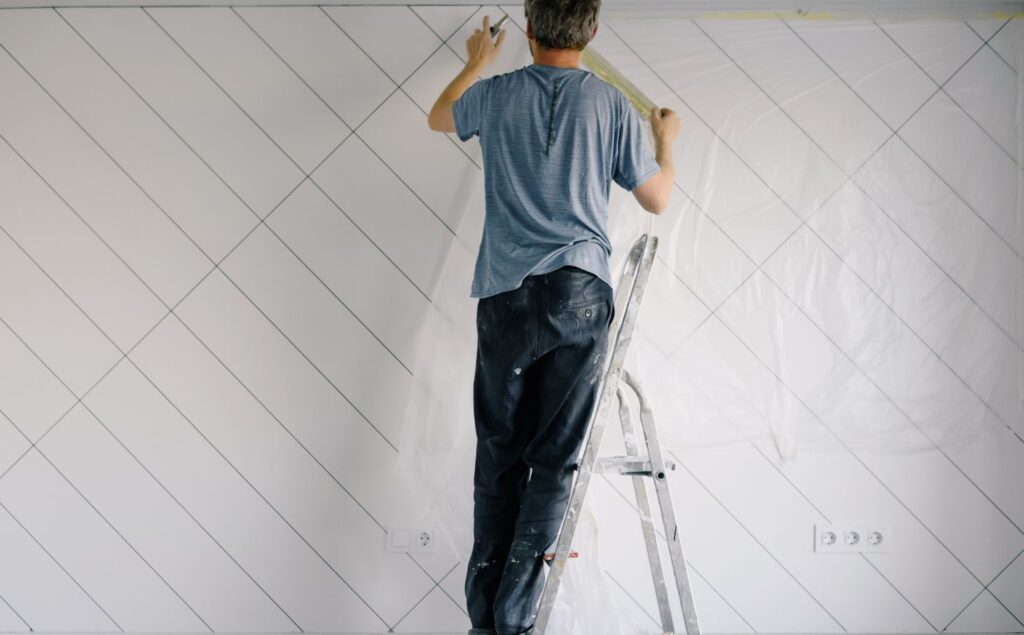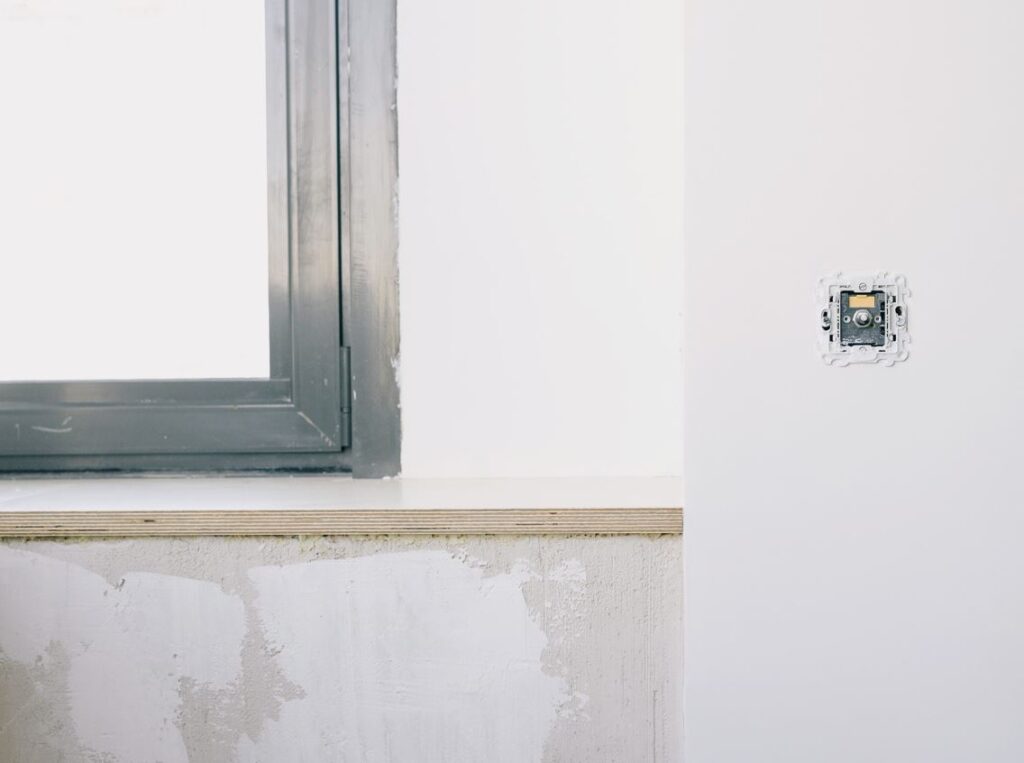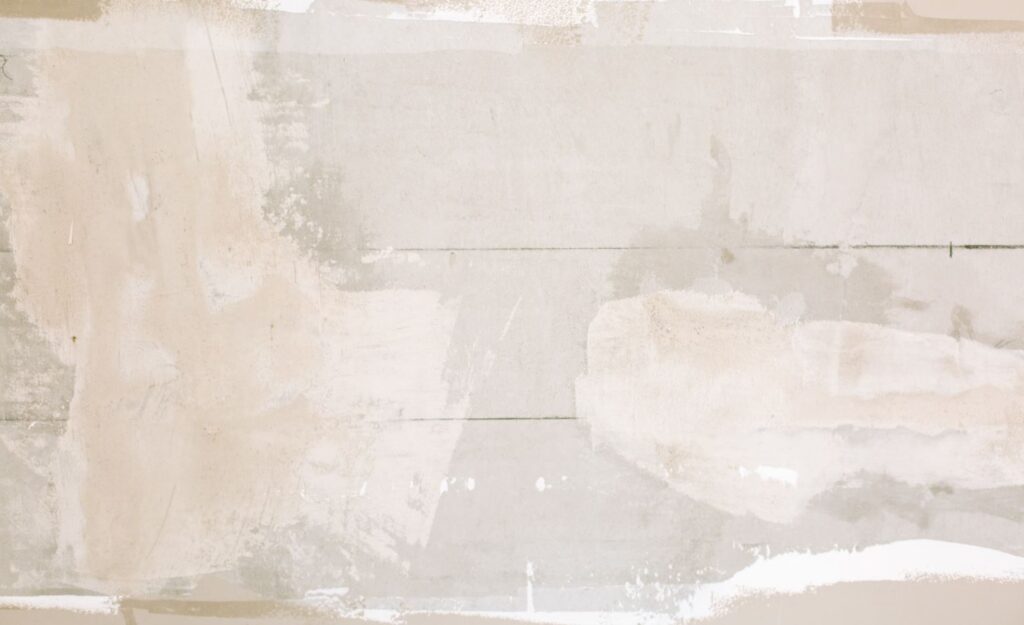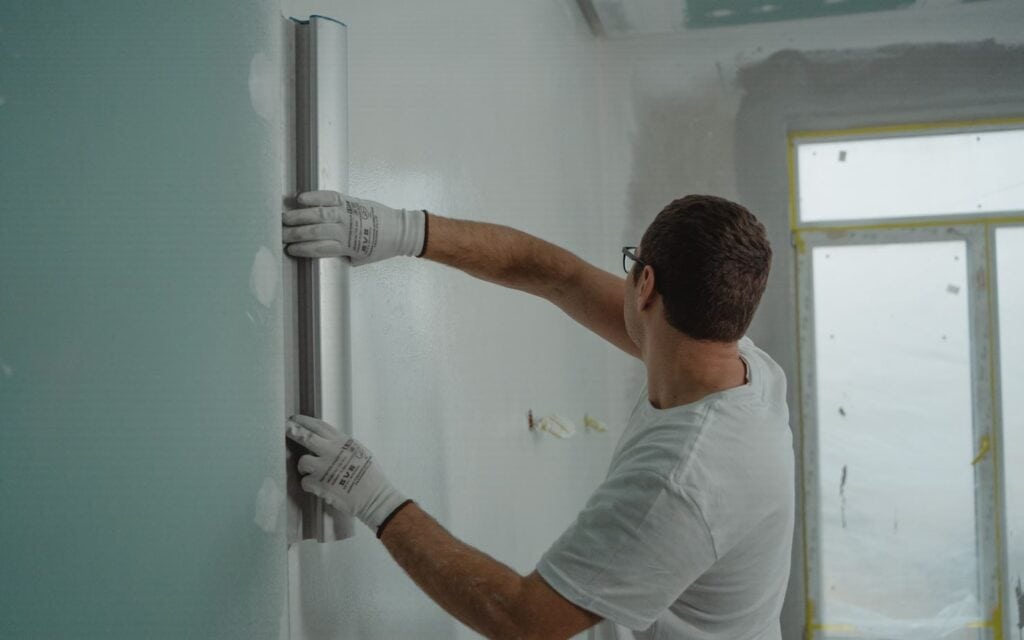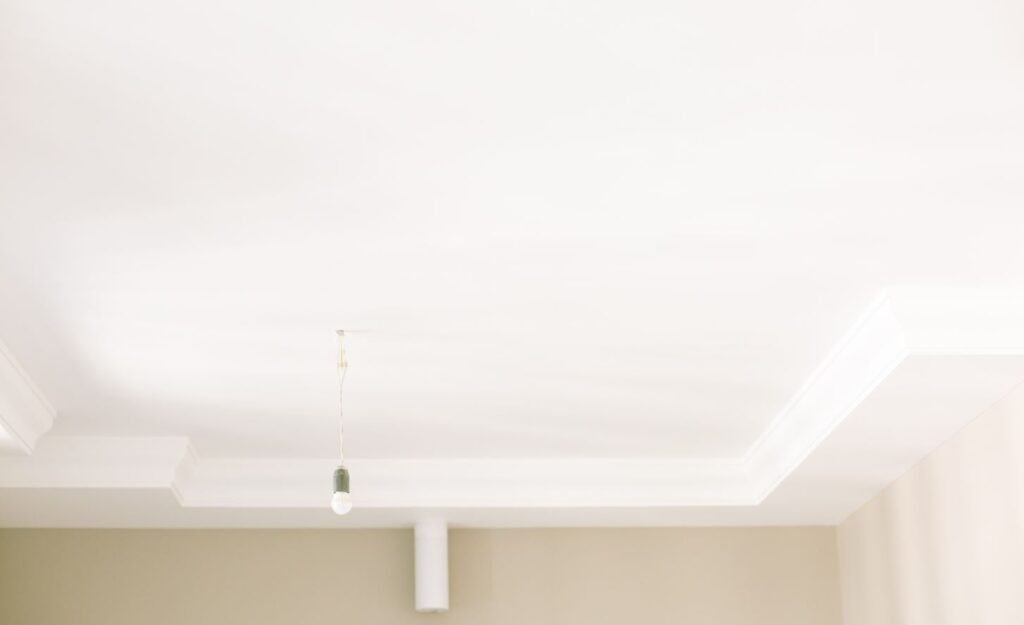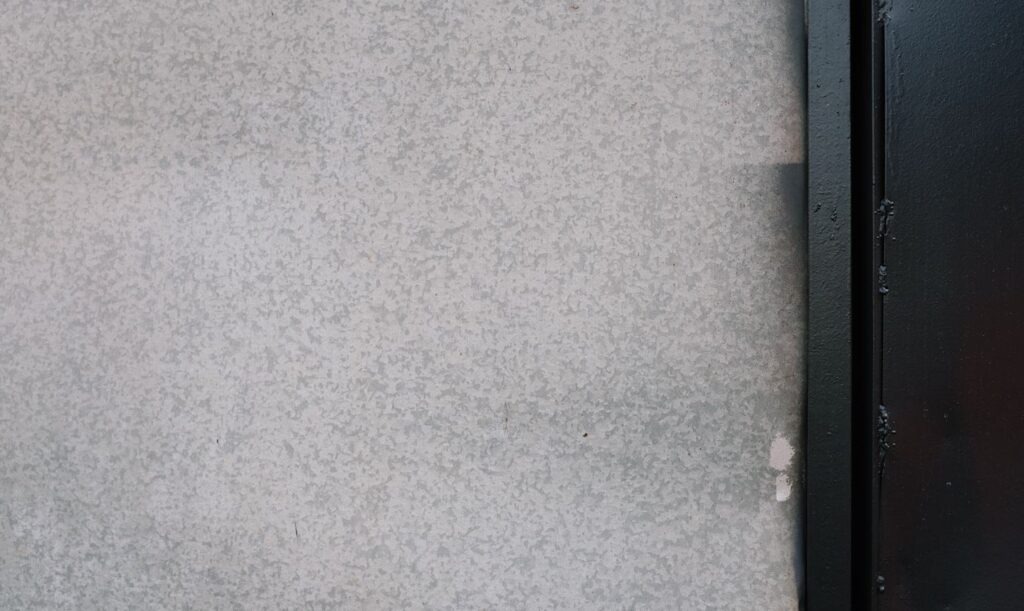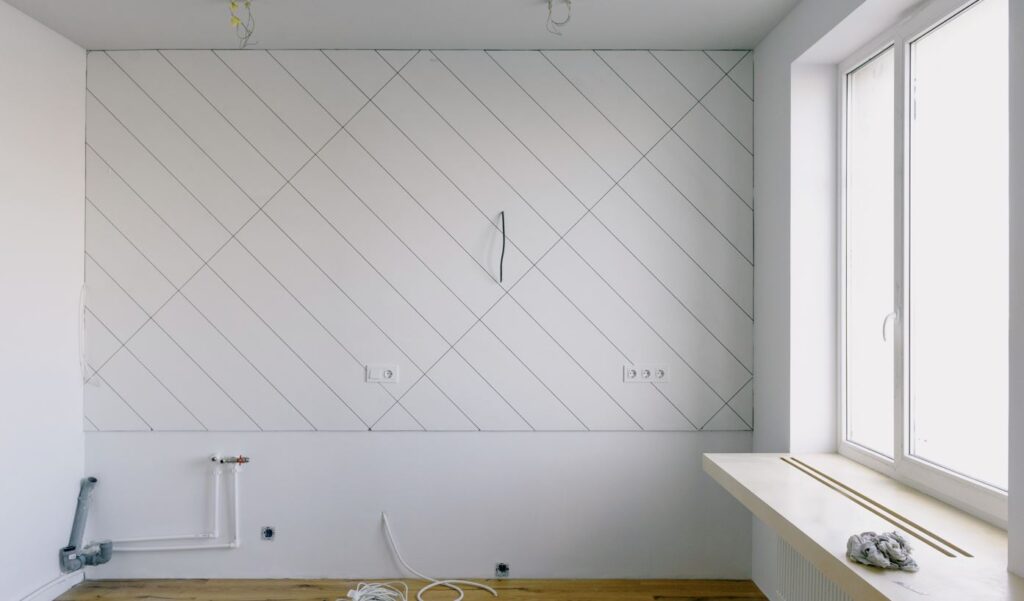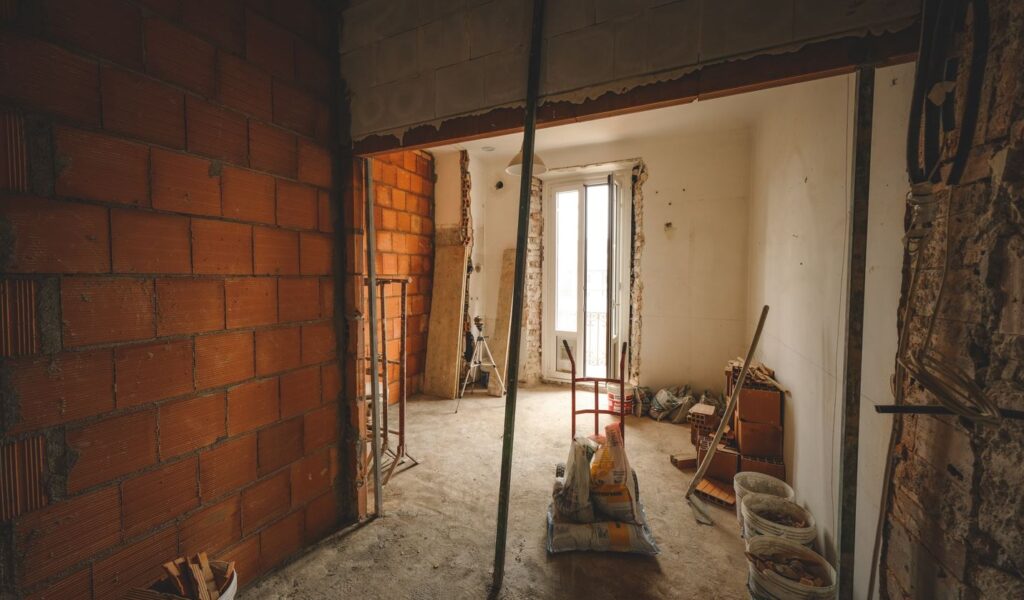A homeowner's worst fear may be water damage. It compromises a building's stability and promotes the growth of toxic mould and mildew.
Water damage to the ceiling is especially troublesome since it destroys the home's aesthetic value and poses serious health and safety concerns. If you know what causes water to leak through a ceiling, you may take steps to safeguard your home from costly repairs.
Here, we'll investigate the causes of water problems in ceilings and offer advice on how to fix them.
Why Does Your Ceiling Often Get Water Damage?
Many homeowners have to deal with water damage to their ceilings. The causes can be anything from a broken pipe to a leaking roof. The prevention of expensive repairs and the security of your house and family depends on prompt attention to any signs of trouble.
Extreme Weather
The roof and ceiling are particularly vulnerable to the effects of severe weather.
Clogged Gutters
Your gutters might be blocked from preventing water from entering your house by twigs, leaves, and granules. Damage to your ceiling could result from water seeping through cracks in your walls or roof.
A/C Unit
Your ceiling may be harmed if your air conditioner produces condensation. Water may flow through your ceiling if your drain is clogged or your drain pan needs to be more full.
Leaky Pipes
Damage to your property might be caused by faulty pipes in the ceiling. The pipelines might be used for anything from sewage to water for appliances like dishwashers and sinks.
Sprinkler Systems
Even a small amount of water used to extinguish a fire might have disastrous results. The ceiling might be damaged by malfunctioning sprinklers as well.
Plumbing Leaks
Dripping or gushing water from an upstairs plumbing leak might damage the ceiling of a downstairs room. Water can seep out when pipes or fittings are broken, rusted, or loose. Leaks like these frequently occur in appliances and fixtures that use water, such as radiators, dishwashers, and washing machines.
Aging piping infrastructure or trauma, such as ruptured pipes, are common causes of plumbing leaks.
Regular house inspections can help homeowners spot plumbing problems in the ceiling. Check for discolouration in the ceiling, active dripping, and moist or damaged wallboard. The leak's origin is almost often immediately above the ruined ceiling.
Roof Damage And Leaks
High winds can remove shingles from roofs, leaving the roof vulnerable to leaks and damage following a storm.
Water spots are discolourations in the ceiling caused by mineral deposits from roof leaks and can be used to locate the source of the leak.
Other telltale indications of roof leakage water damage are:
- Mouldy wallboard
- Waterlogged timbers
- Wetness in the roof's uppermost levels
Signs of roof damage include shards of shingles in the gutters and shingles that are cracked or brittle. Water patches on external walls or wood decking might indicate roof leaks or damage, so homeowners should also check these areas.
Ageing
The home's structure will change significantly as time passes. Age or regular use will cause spider webbing or hairline cracks to emerge. If you watch, you can prevent these cosmetic flaws from becoming major catastrophes.
How Do I Recognise Water Damage On The Ceiling?
Water damage to a ceiling can manifest in several ways, some more obvious than others. Homeowners need to watch for symptoms of water damage in the ceiling, especially after storms.
Ceiling water damage typically causes:
- Drips and stains from water.
- Plaster and paint that are peeling
- Loose plaster
Brittle or clogged gutters, ice dams, cracked roofs, and animal nests might indicate ceiling water damage.
Ceiling Water Stains
Stains and water spots on ceilings are caused by the interaction of water's natural minerals with the components of the ceiling. Water exposure causes oxidation and discolouration in construction materials like drywall, wood, and nails.
Since water damage can occur anywhere in a home, water stains on the ceiling are a classic problem indicator.
Dripping Ceiling
One of the most obvious symptoms of water damage to a ceiling is the presence of drips. However, slow leaks in unfrequented parts of the house, like attics or spare rooms, can linger undetected for weeks or months.
If you notice water dripping from the ceiling, you should investigate the problem immediately. Put a bucket beneath the problem location to catch the drop and stop the damage from spreading until help arrives if you can't discover the source of the leak.
Peeling Plaster And Paint
Ceilings that have suffered extensive water damage will show signs of peeling paint and plaster. Plywood, ceiling joists, or roofing material can be seen through the peeling paint and plaster when exposed to water for an extended period.
Peeled paint may be hiding mould since mould can form on the underside of wet paint and plaster.

Sagging Drywall
When drywall becomes wet, it can warp, buckle, and sag. It could look like a bubble about to pop, and that is exactly what could happen.
In the event of extensive water damage, the drywall may crack open, revealing the ceiling materials above. Drywall, even entire sections, can become a breeding ground for mould and must be repaired promptly.
Repairing Ceiling Water Damage
The safety of everyone within depends on the prompt and proper restoration of a ceiling that has been damaged by water. The ceiling must be torn down, the damaged or stained elements removed, and then reconstructed and fixed.
The homeowner can repair a water-damaged ceiling, or a professional can be hired to do the job.
Flooded Ceiling Fixing For The DIYer
If the water damage to the ceiling is minor, you can fix it yourself. Repairing work yourself can save you money and allow you to complete the job when it best suits your schedule.
Repairs can start once the leak has been addressed and the ceiling has dried. Here's how to fix moderate wear and tear:
- First, you'll want to scrub the ceiling to remove any dirt, debris, or lost items.
- Large sections of damaged ceiling drywall should be removed and replaced.
- Please use mud to seal cracks and fasten them to the joists.
- Plaster ceilings need to be replastered in layers, and homeowners need to give each coat of plaster enough time to dry before applying the next.
- Plastering is finished when each layer blends into the pre-existing ceiling.
Applying drywall mud or plaster with a putty knife to cracks, small holes, or gaps and letting it dry will suffice for places with little damage.
Sanding, priming, and painting the ceiling will provide a uniform appearance.
What does a ceiling that has been damaged by water look like?
Ceilings can sustain water damage in several ways, and it's important to identify the symptoms quickly so repairs can be made. Ceiling water damage gives telltale signs.
In this article, we'll look at the telltale indications of water damage on a ceiling so you can immediately stop the problem from worsening.
Flakes Of Brown
Brown spots on the ceiling are a common symptom of water damage. The patch swells and layers out as the water spreads.
The Ceiling Has Mould Spots/Growths
The presence of mould is an undeniable indicator of water damage. If you find any green or black spots, mould is probably to blame. Because of the health risks mould poses, the infestation must be contained.
Wall And Door Frame Swelling
There's a risk of water seeping down through the roof, walls, and doors. The wood will swell as it absorbs the water.
Objects Of Decoration Physically Set Apart From The Walls
The wallpaper and moulding on the walls are peeling because of water damage. The paint around the damaged area may also begin to peel.
Sweating
Beads of water on the wall or water stains on the ceiling are possible effects.
Frequently Asked Questions About Plaster Wall
Regularly inspect your roof for any signs of damage, maintain proper roof drainage, promptly repair any damaged shingles or flashing, and ensure adequate attic ventilation.
Regularly inspect and maintain your plumbing system, fix any leaks promptly, insulate pipes in cold weather, and be cautious with plumbing fixture usage.
Ensure proper insulation and ventilation in your attic or crawl space, use dehumidifiers if necessary, and address any sources of excess moisture.
Clean your gutters regularly, especially before the rainy season, ensure downspouts are clear and direct water away from the foundation, and consider installing gutter guards.
Regularly inspect and maintain your appliances, replace worn-out hoses or faulty parts, and be vigilant for any signs of leaks or malfunctions.
Once the ceiling gets wet, what happens?
It Looks Unattractive
Water damage causes brown spots and dirt lines on your walls and plaster. Peeling can occur in decorative finishes, including paint, trim, and wallpaper. The ceiling might bubble and sag, too, which would be a major eyesore.
Mold Infestation
A ceiling damaged by water may quickly acquire brown and black spots. If your HVAC system isn't maintained, mould and mildew can spread swiftly. Inhaling mould spores can wreak havoc on the respiratory systems of people who are sensitive to them.
There Is A Risk Of Fire.
The ceiling has water damageThere is a greater potential for a fire to start if there is water in the electrical wire. It is critical to have a licenced electrician verify the level of destruction.
Trauma From Slips And Falls
If your ceiling is leaking, water may pool there. Unaware youngsters and adults in the home may trip and fall into the water puddles.
Rising Utility Bills
Insulation performance is negatively impacted by moisture, leading to higher energy costs. Water damage could need the replacement of all of your home's insulation.

What Can Be Done About a Leaky Ceiling?
When you find a ceiling damaged by water, you must act quickly. You can solve the issue independently or get professional help.
Prevent An Escalation
Ceiling water damage can lead to structural problems throughout the house. Before doing anything else, remove all your goods and furnishings from the area. If any water is dripping, catch it in pails.
The water will quickly spread and soak in if the ceiling is made of drywall. Tarps make leak detection easy. The water can also drip through a hole you make with a sharp tool. To keep your insulation safe, limiting the spread of water is also important.
Dry The Moisture
Once the source of the leak has been located, the ceiling and any other impacted buildings must be dried. Make sure the area is completely dehumidified by drying the air. Mould infestation and structural damage might be the result of any moisture that becomes trapped in your ceiling.
Ceiling ventilation is best handled by a professional if the damage is extensive. Cleaning up after water damage is another service a professional restoration crew may do. A thorough cleaning is essential after a leak of tainted, stinky water.
Replace The Ceiling
To repair your roof, you can do it yourself or contact an expert. The homeowner can usually repair or replace ceilings if the damage is purely aesthetic. It's important to remember that repairing or replacing a single ceiling tile may alter the look of the rest of the ceiling. It is recommended to replace the ceiling of the entire room at once.
However, the whole thing may be boring and slow. The stress of ceiling replacement can be reduced by hiring a professional. A professional can look over the entire ceiling and spot any problems you may have missed. They can rapidly replace it as well.
Hire A Contractor
The best approach to assess the level of damage is to hire a professional specialising in water damage restoration. The professional evaluates the extent of the damage to your ceiling and roof. If the ceiling is severely damaged, it must be replaced entirely.
Finding the leak's origin with the aid of an expert is another option. Water might spread far from its initial entry point if the roof is porous. A professional might also estimate the price tag to fix the ceiling's water damage.
Get an electrician in on the contractor hiring process too. The presence of any moisture in your electrical wiring is extremely dangerous. Electric wiring and appliances are also vulnerable to water damage.
Conclusion
Ceiling water damage is a prevalent problem that can threaten the safety and integrity of a structure. Pipe leaks, roof leaks, blocked gutters, defective air conditioners, leaking pipes, and faulty sprinkler systems are all common culprits. Broken, corroded, or even loose pipes can create leaks in the plumbing system, while high winds, missing shingles, and mineral deposits can lead to problems with the roof.
Drips, stains, peeling paint and plaster, sagging drywall, and mould growth are just some of the signs of water damage. The most noticeable sign is a dripping ceiling, although slow leaks in infrequently used places might go unnoticed for weeks or months. Mould can grow undetected behind flaking paint and plaster, and warped, buckled, and sagging drywall is a breeding ground for such problems.
For the sake of everyone living there, fixing the ceiling's leak is an absolute must. Tearing down the ceiling, removing any stained or broken pieces, and then rebuilding and fixing it is required. Both DIY and professional ceiling repair services are available to homeowners. Scrubbing the ceiling, replacing big areas of damaged drywall, applying mud to fill gaps, and laying layers of plaster are all viable options for repairing a ceiling that has been flooded. Having the ceiling sanded, primed, and painted creates a consistent look across the room.
Brown patches, mould spots, and swelling in walls and door frames are all signs of mould growth, which is a byproduct of water damage. In order to mitigate any further damage, it is crucial to recognise the warning signs. Peeling wallpaper and moulding, drooping paint, brown patches, and dirt lines on decorative finishes are all signs of water damage. Unsightly bubbles and sagging in the ceiling are also possible. A leaking ceiling can cause mould growth, and water damage in general can cause structural failure and subsequent fires.
Slips and falls due to water are another common source of injury and increased energy costs. Preventing more damage, removing the source of the moisture, and installing a new ceiling are all necessary steps in fixing a leaky ceiling. Even if the damage to a ceiling is merely cosmetic, homeowners should consider replacing the entire ceiling at once. In order to determine how much it will cost to repair the water damage to the ceiling, it is best to hire a specialist who specialises in water damage restoration. When looking for a contractor, an electrician might also be helpful. It is critical to treat the issue as soon as possible because water damage can also cause damage to electrical wiring and appliances.
Content Summary
- Water damage is a homeowner's worst fear as it compromises stability and promotes the growth of toxic mould.
- Ceiling water damage destroys the home's aesthetic value and poses health and safety concerns.
- Knowing the causes of water damage in ceilings helps safeguard against costly repairs.
- Common causes include extreme weather, clogged gutters, A/C unit condensation, leaky pipes, malfunctioning sprinkler systems, and plumbing leaks.
- Regular house inspections can help spot plumbing problems in the ceiling.
- Roof damage and leaks are often caused by high winds and can be detected through water spots and other signs.
- Ageing structures can develop cracks and cosmetic flaws that can lead to water damage.
- Recognising water damage on the ceiling is important for prompt repairs.
- Signs of ceiling water damage include water stains, peeling plaster and paint, and sagging drywall.
- Prompt and proper restoration is essential for the safety of everyone.
- Repairs can be done by homeowners or professionals depending on the severity of the damage.
- Fixing minor water damage to the ceiling can be a DIY project, saving money and allowing flexibility in scheduling.
- The repair process includes cleaning, removing damaged sections, sealing cracks, replastering or applying drywall mud, and painting.
- Water damage on the ceiling can be identified through brown spots, mould growth, swelling of wall and door frames, and peeling wallpaper and moulding.
- Water damage can lead to an unattractive appearance, mould infestation, fire risk, and safety hazards.
- Rising utility bills can be a consequence of water damage due to insulation performance being affected.
- Acting quickly is important when dealing with a leaky ceiling.
- Removing goods and furnishings from the area and catching dripping water in pails helps prevent further damage.
- Drying the affected area and dehumidifying the air is crucial to prevent mould and structural damage.
- Professional assistance may be necessary for extensive damage and ceiling ventilation.
- Hiring a professional restoration crew can help with cleaning up after water damage.
- Repairing or replacing the ceiling can be done by homeowners, but it's recommended to replace the entire room's ceiling for consistency.
- Hiring a professional for ceiling replacement reduces stress and ensures thorough evaluation and rapid replacement.
- Hiring a water damage restoration specialist helps assess the level of damage and find the source of leaks.
- Electricians should be involved in the process to check for moisture in electrical wiring and appliances.
- Water damage compromises a building's stability and promotes the growth of toxic mould and mildew.
- Water damage to the ceiling destroys the home's aesthetic value and poses serious health and safety concerns.
- Prompt attention to signs of trouble can help prevent expensive repairs and ensure the security of the house and family.
- Severe weather can make the roof and ceiling particularly vulnerable to damage.
- Blocked gutters can cause water to seep through cracks in walls or roofs, leading to ceiling damage.
- Air conditioner condensation can harm the ceiling if drains are clogged or drain pans are insufficient.
- Faulty pipes in the ceiling can cause damage to the property and may be used for sewage or water supply.
- Malfunctioning sprinkler systems can also cause damage to the ceiling.
- Plumbing leaks, especially from upstairs, can damage the ceiling of a downstairs room.
- Regular house inspections can help homeowners identify plumbing problems in the ceiling.
- Roof damage and leaks caused by high winds can lead to water spots and other signs of damage.
- Ageing structures may develop cracks and cosmetic flaws, which can become major issues if not addressed.
- Water damage on the ceiling manifests as drips, stains, peeling plaster and paint, and sagging drywall.
- Water stains on the ceiling are a classic indicator of water damage.
- Dripping from the ceiling is a clear sign of water damage.
- Peeling paint and plaster are common signs of extensive water damage.
- Sagging drywall can occur when it becomes wet, leading to structural issues and mould growth.
- The prompt and proper restoration of a water-damaged ceiling is crucial for everyone's safety.
- Homeowners can repair minor water damage themselves, saving money and allowing flexibility in scheduling.
- Cleaning, removing damaged sections, sealing cracks, replastering or applying drywall mud, and painting are involved in the repair process.
- Brown spots on the ceiling indicate water damage and mould growth is a clear sign of water intrusion.
- Swelling of wall and door frames can indicate water seepage from the roof.
- Peeling wallpaper and moulding, as well as sweating walls and ceilings, are signs of water damage.
- Water damage on the ceiling makes it unattractive, promotes mould infestation, increases fire risk, and poses safety hazards.
- Rising utility bills can be a consequence of water damage due to insulation performance being affected.

